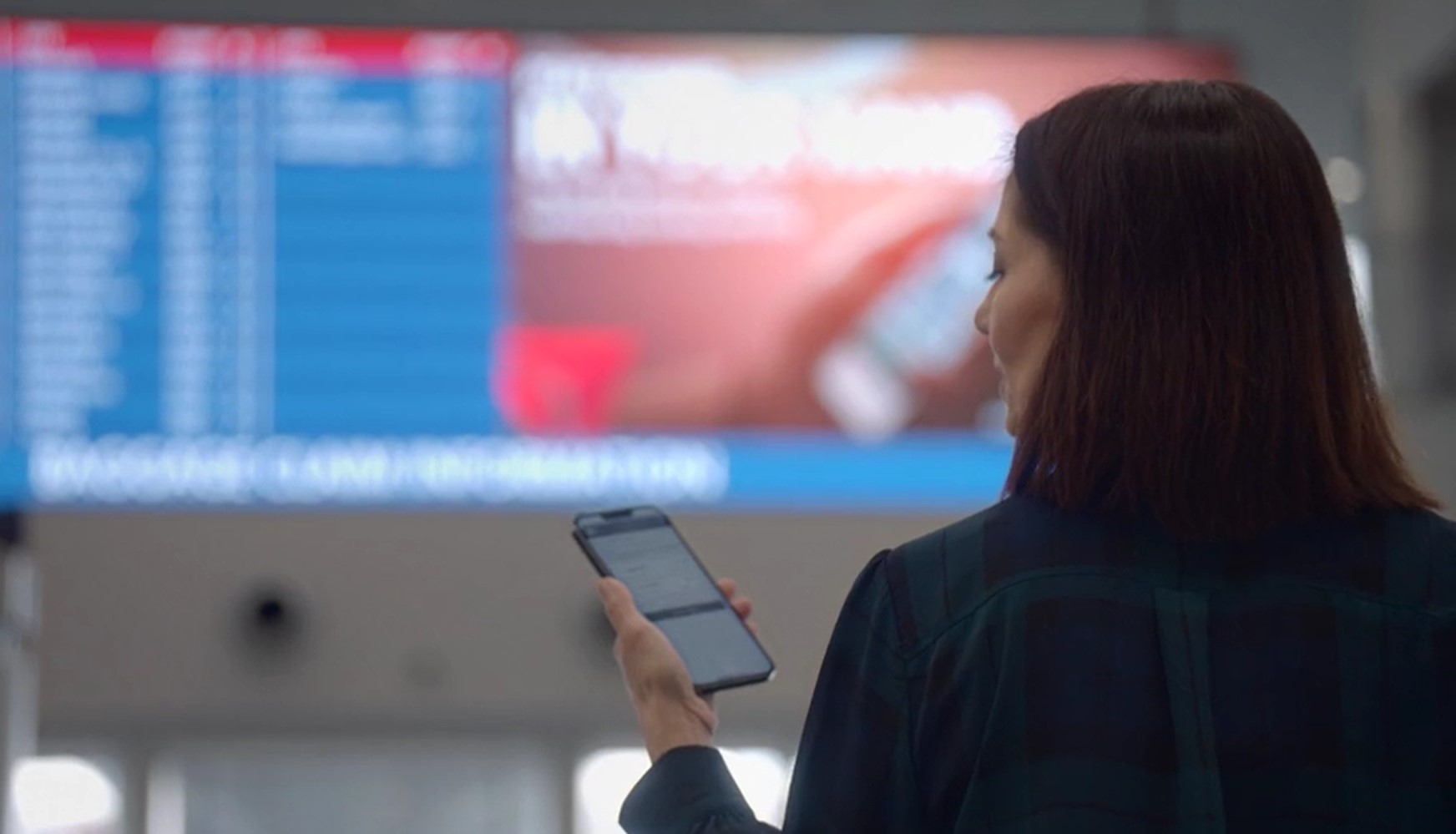Houston, We Have a Delay: The Worst Airports for Cutting It Close
Three hours before takeoff? At some U.S. airports, that’s not early—it’s essential. And if you’re rushing in with 45 minutes to spare? You’d better hope you’re flying out of Columbus.
by George Gomez
April 25, 2025
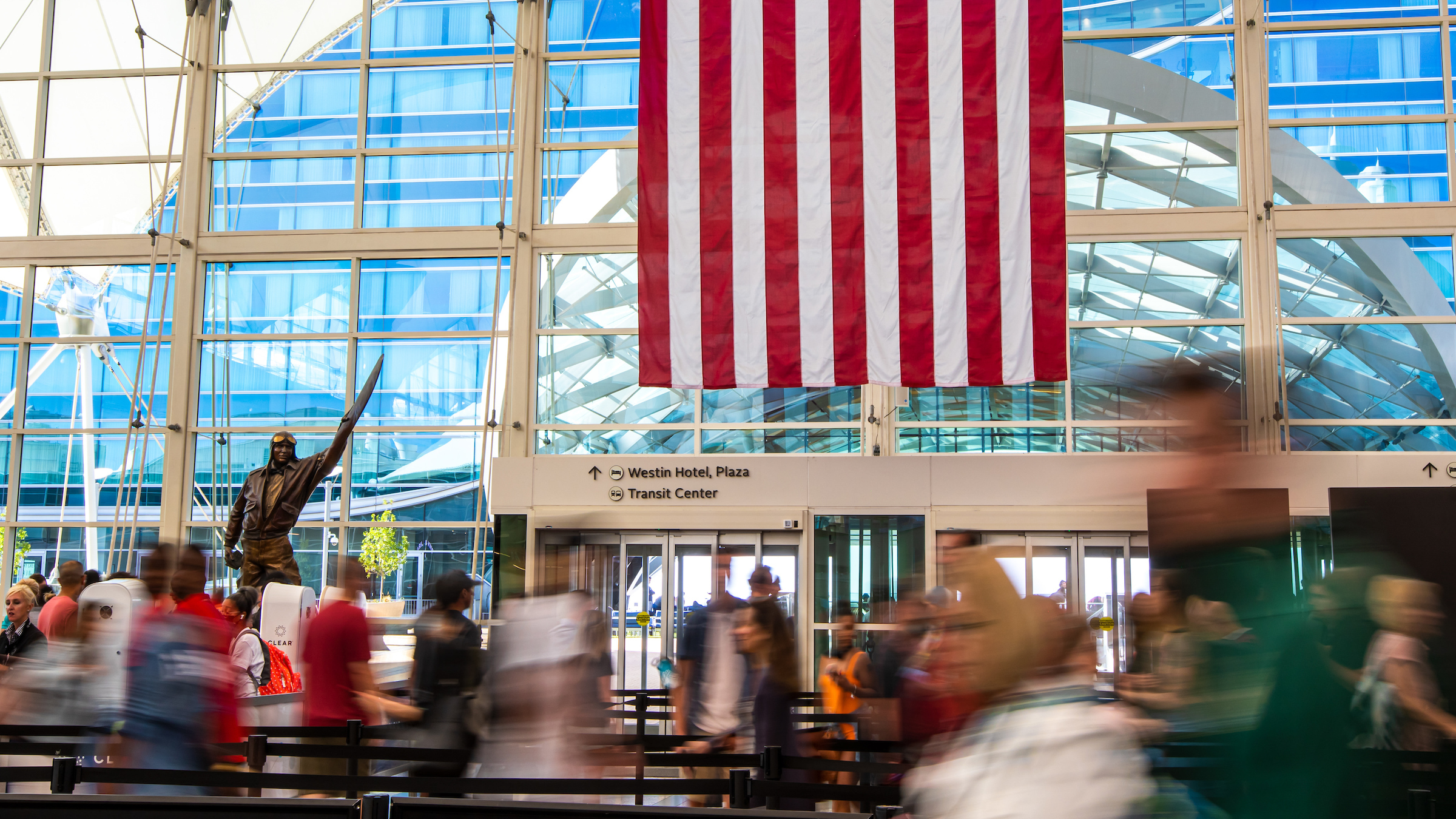
Photo: Courtesy of Denver International Airport.
For years, the standard advice for domestic flights has been simple: arrive two hours before departure. But in today’s airport reality—where traffic jams, long security lines, and cavernous terminals can turn a quick walk to the gate into a full-blown obstacle course—that advice doesn’t always cut it.
A new data-driven study, conducted by Upgraded Points, analyzed 15 pre-flight stressors at 50 of the busiest U.S. airports—from TSA wait times and gate counts to parking access and terminal congestion—to answer a deceptively simple question: How early should you really arrive at the airport?
The answer? It depends on where you’re flying from—and how much time you’re willing to risk.
These Airports Demand a Three-Hour Head Start
If you’re departing from George Bush Intercontinental Airport (IAH) in Houston, plan to leave your house before sunrise. Based on the study’s analysis, it tops the list with a recommended arrival time of 3 hours and 20 minutes before departure—by far the highest in the country.
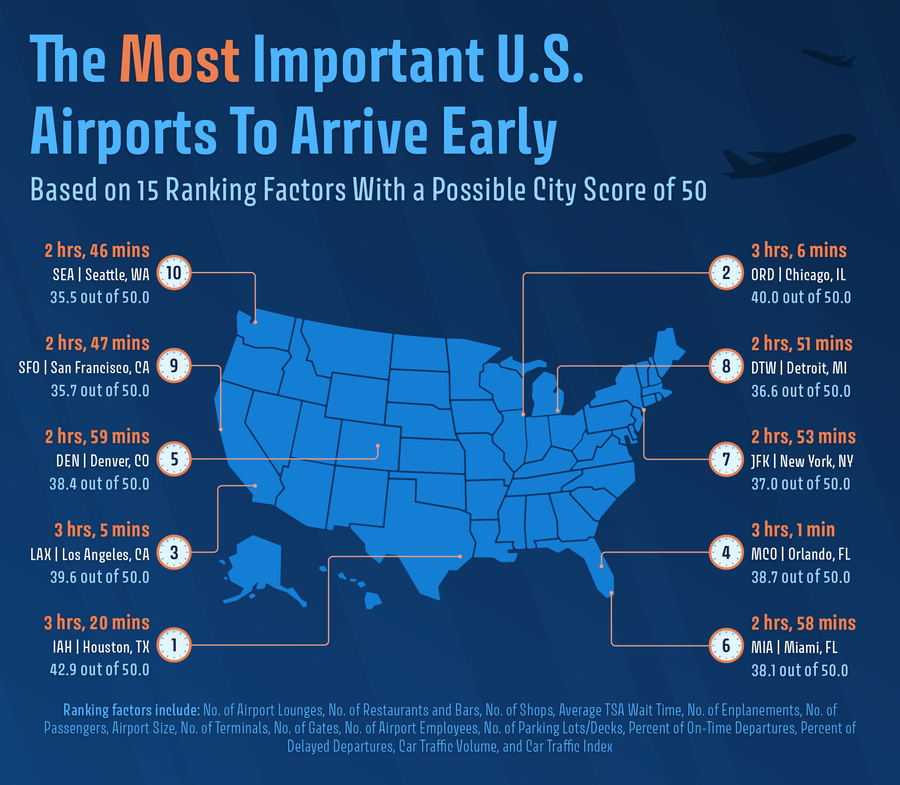
Photo: Courtesy of Upgraded Points
Houston isn’t alone. Here are the top 10 airports where business travelers should build in major buffer time:
| Rank | Airport | Code | Recommended Arrival Time |
|---|---|---|---|
| 1 | George Bush Intercontinental | IAH | 3 hr 20 min |
| 2 | Chicago O’Hare International | ORD | 3 hr 6 min |
| 3 | Los Angeles International | LAX | 3 hr 5 min |
| 4 | Orlando International | MCO | 3 hr 1 min |
| 5 | Denver International | DEN | 2 hr 59 min |
| 6 | Miami International | MIA | 2 hr 58 min |
| 7 | John F. Kennedy International | JFK | 2 hr 53 min |
| 8 | Detroit Metropolitan | DTW | 2 hr 51 min |
| 9 | San Francisco International | SFO | 2 hr 47 min |
| 10 | Seattle-Tacoma International | SEA | 2 hr 46 min |
What do these airports have in common? Big terminals, heavy passenger volume, and in many cases, notorious traffic just to reach the curb.
“Houston stands out not just for its size, but for the compounding effect of multiple factors—long walks between terminals, lengthy TSA lines, and unpredictable congestion at check-in,” the researchers note.
The story’s similar at O’Hare and Los Angeles, where sheer volume and aging infrastructure frequently push travelers to the brink. And with hubs like Miami, New York JFK, and San Francisco, handling significant international traffic, security can take longer—especially during peak times.
Airports Where You Can Arrive Later
Not every airport feels like a race against the clock. A handful of smaller or better-designed airports offer a faster, less chaotic experience—and in some cases, travelers can reasonably arrive less than an hour before their flight.
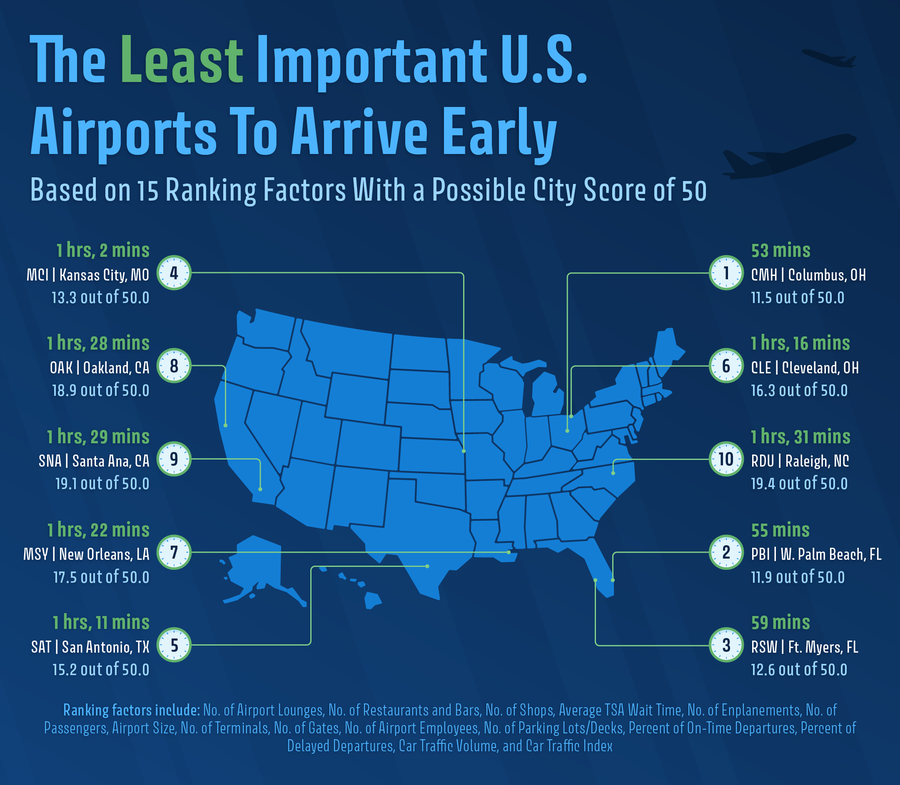
Photo: Courtesy of Upgraded Points
The most forgiving airport? John Glenn Columbus International (CMH) in Ohio, where travelers only need 53 minutes to get from car to gate.
Here are the 10 airports with the shortest recommended arrival times:
| Rank | Airport | Code | Recommended Arrival Time |
|---|---|---|---|
| 1 | John Glenn Columbus International | CMH | 53 min |
| 2 | Palm Beach International | PBI | 55 min |
| 3 | Southwest Florida International | RSW | 59 min |
| 4 | Kansas City International | MCI | 1 hr 2 min |
| 5 | San Antonio International | SAT | 1 hr 11 min |
| 6 | Cleveland Hopkins International | CLE | 1 hr 16 min |
| 7 | Louis Armstrong New Orleans | MSY | 1 hr 22 min |
| 8 | Oakland International | OAK | 1 hr 28 min |
| 9 | John Wayne/Orange County | SNA | 1 hr 29 min |
| 10 | Raleigh-Durham International | RDU | 1 hr 31 min |
“These airports tend to have simpler layouts, lower foot traffic, and faster-moving security lines,” the study reports. “Columbus and Palm Beach stand out for their compact terminals and minimal delay history, making them some of the least stressful airports to navigate.”
The National Average: Just Over Two Hours
Across all 50 airports analyzed, the average recommended arrival time is 2 hours and 5 minutes—slightly longer than the rule of thumb most travelers follow.
That’s because many variables affect your time to gate: how far you’ll need to walk, how many restaurants or shops might distract you, how long you’ll wait for parking shuttles, and whether security is fully staffed.
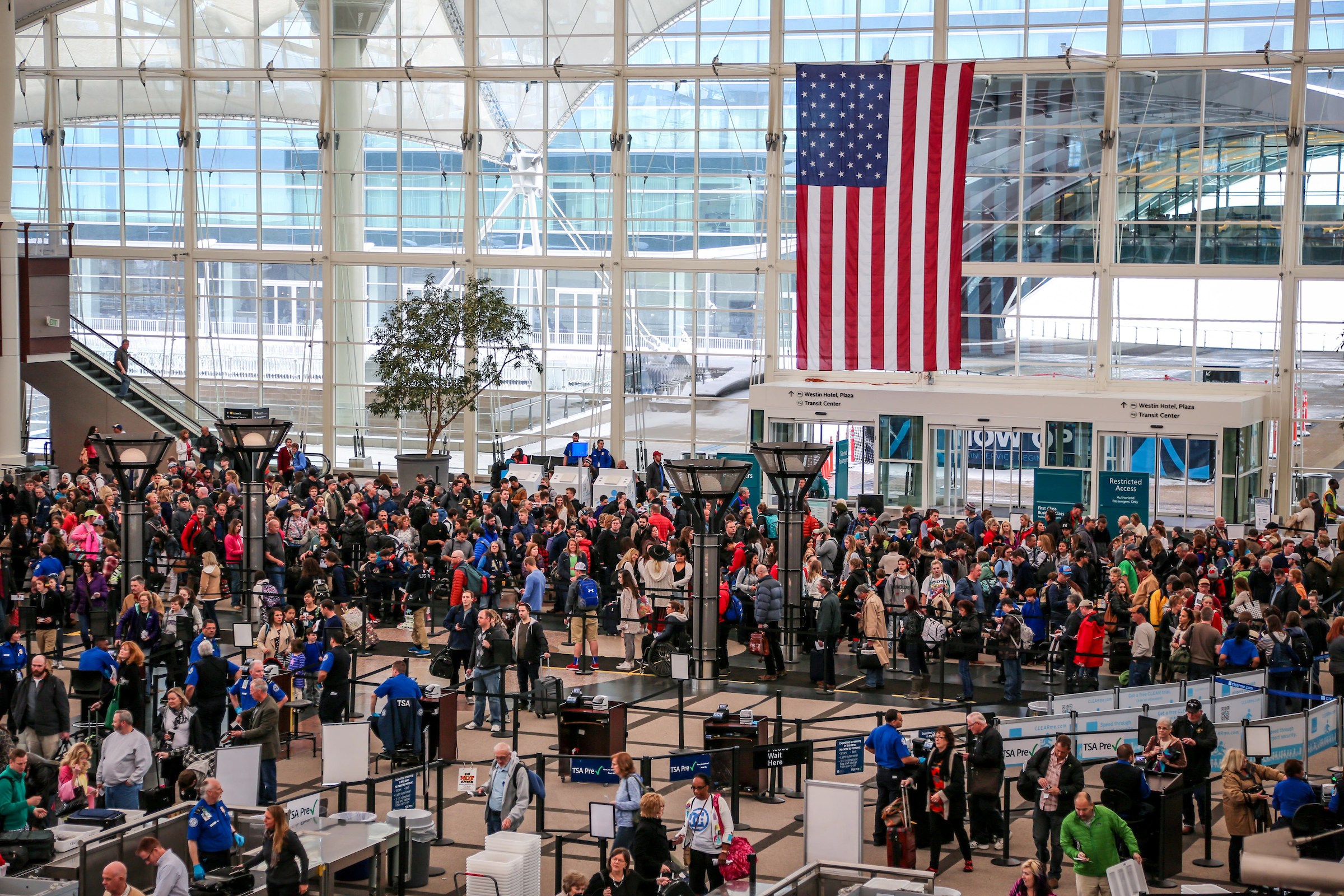
Photo: Courtesy of Denver International Airport.
Kansas City, for example, scores well despite its size because it has fewer flight delays and smoother traffic flow. Meanwhile, Detroit—often under the radar—requires extra time due to its size, gate count, and surrounding road congestion.
What This Means for Business Travelers
Time is money—and nowhere is that more apparent than in the airport. While frequent flyers know their home hub inside and out, it’s easy to get blindsided when flying from a less familiar airport.
Whether you’re dashing to a Monday meeting or flying back late Thursday night, knowing how early to arrive can mean the difference between a seamless trip and a missed flight.

Photo: Courtesy of British Airways
The study’s takeaway? Check your airport’s profile before every trip. If you’re departing from a large hub like LAX, IAH, or ORD, give yourself the grace of extra time. If you’re lucky enough to fly out of Columbus or Palm Beach, you’ve got a bit more breathing room—but it never hurts to arrive early.
“No one wants to start a trip stressed and sprinting through the terminal,” the researchers conclude. “Knowing what to expect at your airport helps you plan smarter, move faster, and travel better.”



